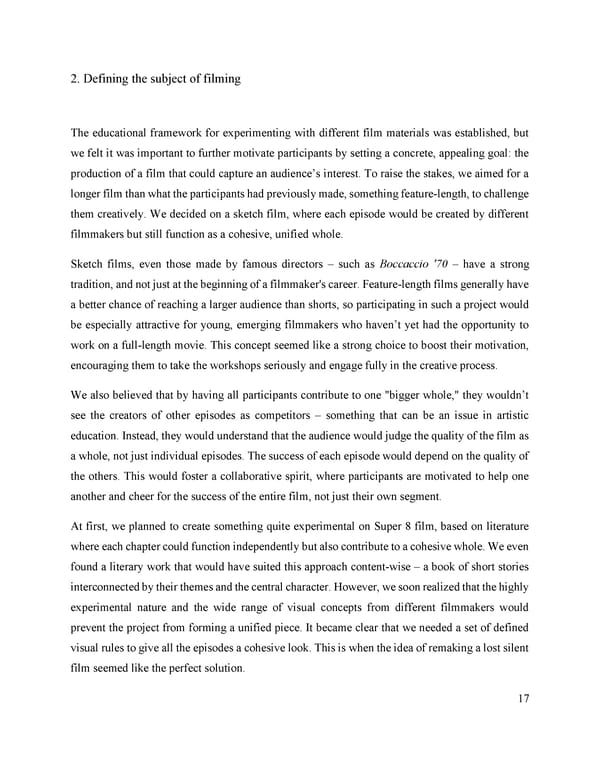2. Defining the subject of filming The educational framework for experimenting with different film materials was established, but we felt it was important to further motivate participants by setting a concrete, appealing goal: the production of a film that could capture an audience’s interest. To raise the stakes, we aimed for a longer film than what the participants had previously made, something feature-length, to challenge them creatively. We decided on a sketch film, where each episode would be created by different filmmakers but still function as a cohesive, unified whole. Sketch films, even those made by famous directors – such as Boccaccio '70 – have a strong tradition, and not just at the beginning of a filmmaker's career. Feature-length films generally have a better chance of reaching a larger audience than shorts, so participating in such a project would be especially attractive for young, emerging filmmakers who haven’t yet had the opportunity to work on a full-length movie. This concept seemed like a strong choice to boost their motivation, encouraging them to take the workshops seriously and engage fully in the creative process. We also believed that by having all participants contribute to one "bigger whole," they wouldn’t see the creators of other episodes as competitors – something that can be an issue in artistic education. Instead, they would understand that the audience would judge the quality of the film as a whole, not just individual episodes. The success of each episode would depend on the quality of the others. This would foster a collaborative spirit, where participants are motivated to help one another and cheer for the success of the entire film, not just their own segment. At first, we planned to create something quite experimental on Super 8 film, based on literature where each chapter could function independently but also contribute to a cohesive whole. We even found a literary work that would have suited this approach content-wise – a book of short stories interconnected by their themes and the central character. However, we soon realized that the highly experimental nature and the wide range of visual concepts from different filmmakers would prevent the project from forming a unified piece. It became clear that we needed a set of defined visual rules to give all the episodes a cohesive look. This is when the idea of remaking a lost silent film seemed like the perfect solution. 17
 Lost Analogue: Exploring Film, Music, and Interdisciplinary Methods in Education Page 17 Page 19
Lost Analogue: Exploring Film, Music, and Interdisciplinary Methods in Education Page 17 Page 19